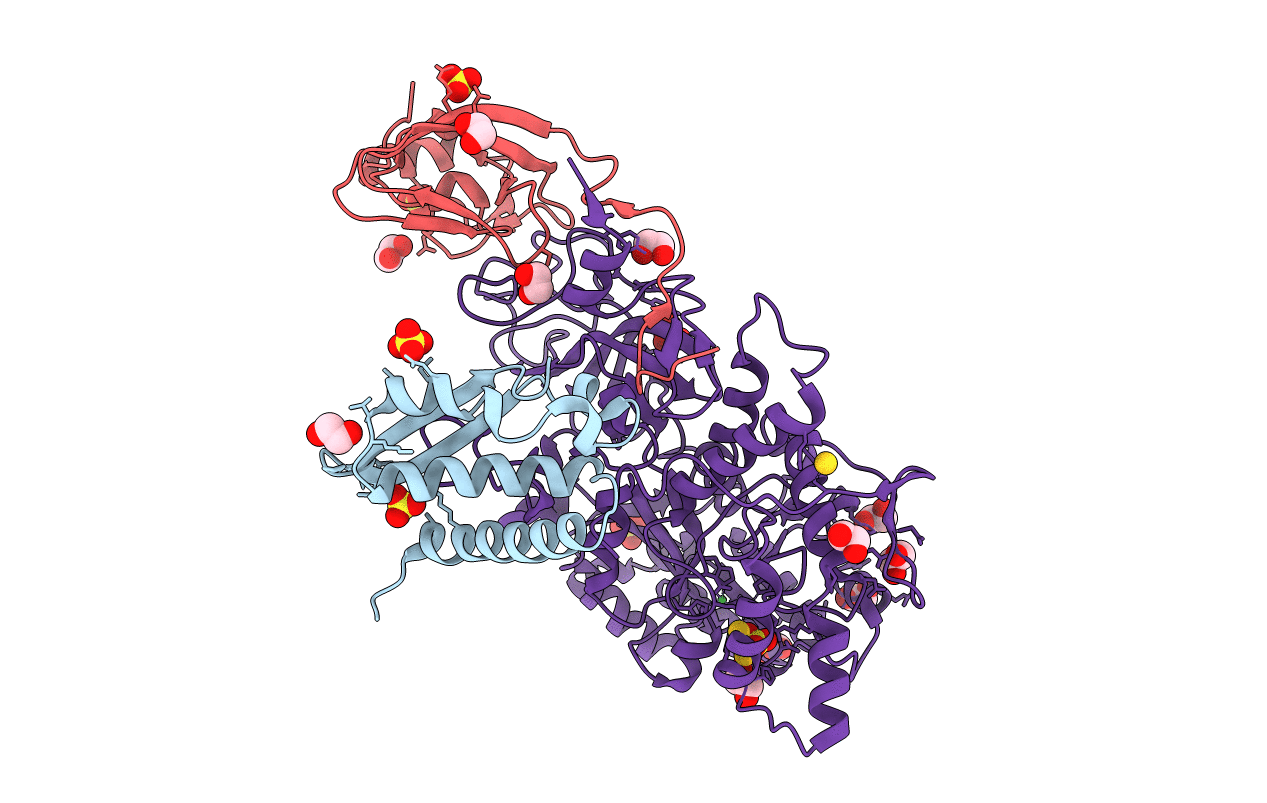
Deposition Date
2018-11-26
Release Date
2019-05-01
Last Version Date
2024-01-24
Entry Detail
PDB ID:
6I9Y
Keywords:
Title:
The 2.14 A X-ray crystal structure of Sporosarcina pasteurii urease in complex with Au(I) ions
Biological Source:
Source Organism:
Sporosarcina pasteurii (Taxon ID: 1474)
Method Details:
Experimental Method:
Resolution:
2.14 Å
R-Value Free:
0.20
R-Value Work:
0.17
R-Value Observed:
0.17
Space Group:
P 63 2 2


